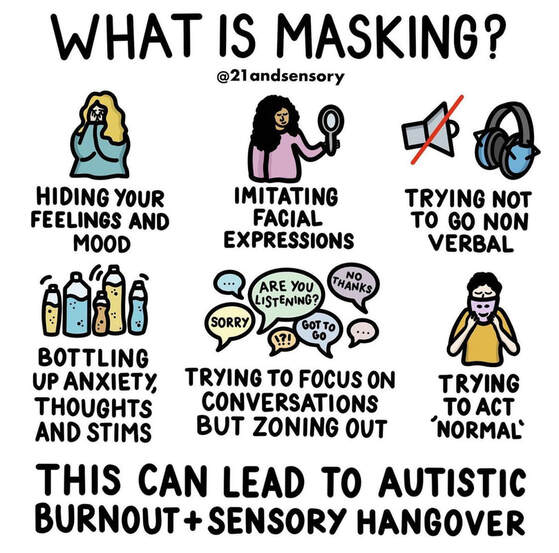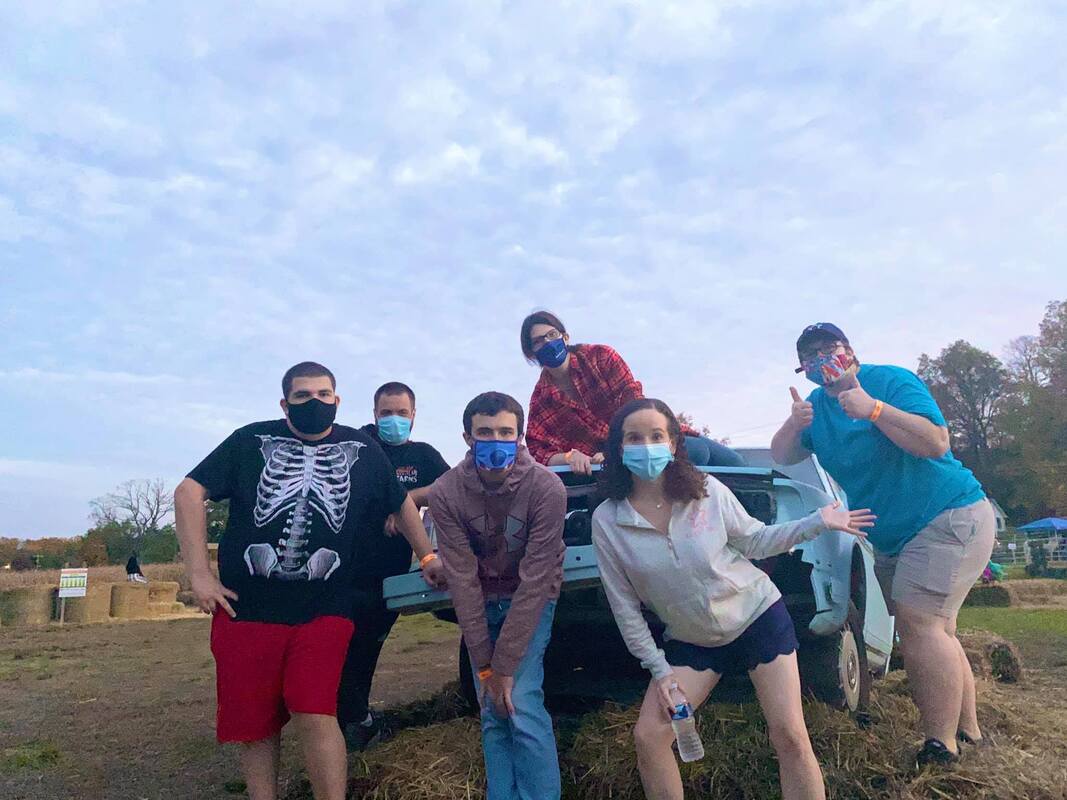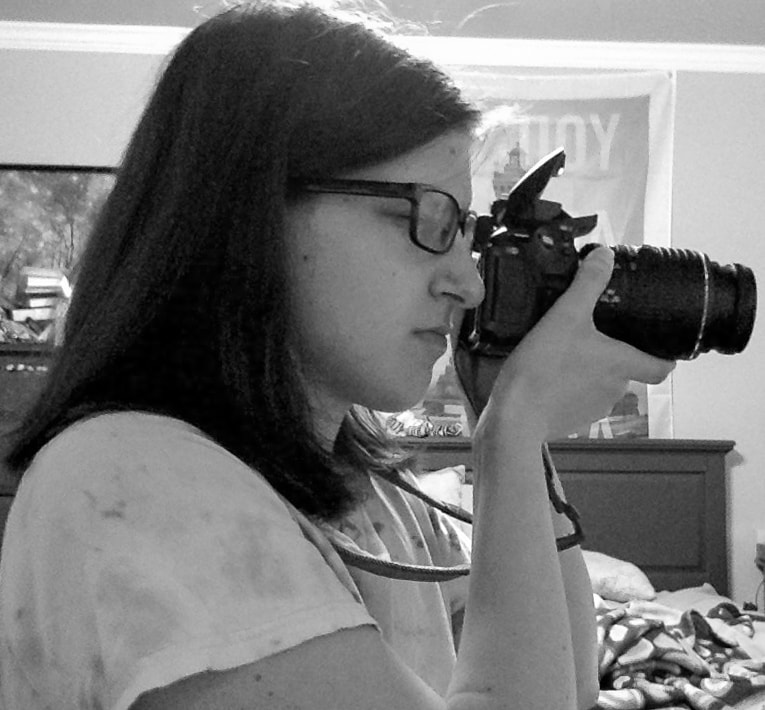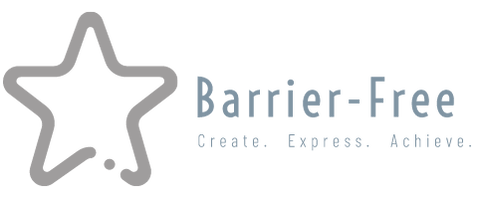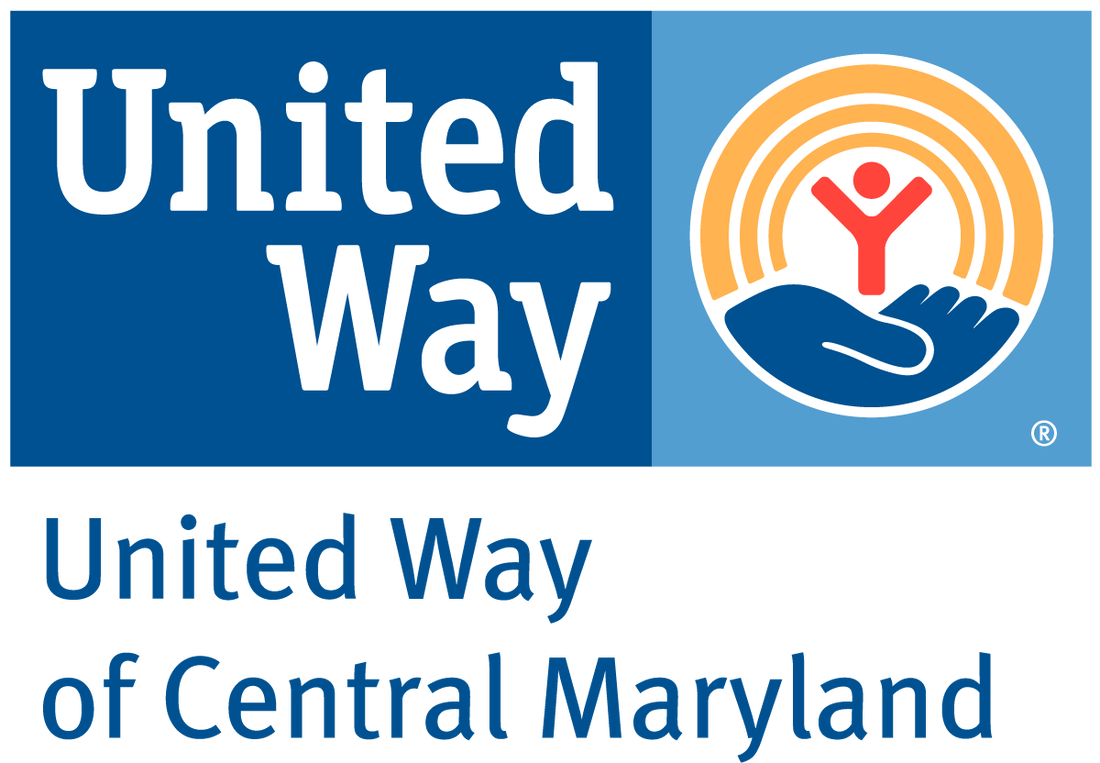|
Putting on a mask in theater turns a person into a completely different person. When we are in social settings, for both neurotypical and neurodiverse people we put on appearance and behaviors that we are ok even if we are struggling. Our personal world could be a burning dumpster fire and we would tell other people that we are fine. What is autism masking? Autism masking is precisely what it sounds like- camouflaging your autism traits to fit in. "Masking is a desperate and sometimes subconscious reaction to an emotionally intimidating situation. It manifests as a natural adaptation strategy to navigate an environment our brain finds challenging," Augustina, @theautisticlife, autism self-advocate. What does autism masking look like?
Why does a person with autism mask? There are several reasons why a person masks and is different for each person with autism. These include:
What are the effects of masking autism?
Meltdowns are often the result of highly stimulating situations or create high levels of anxiety that feel like they can't be escaped. When someone is in this situation, their reaction is flight, fight, or freeze. If the person cannot afford to escape, it leaves two options: fight or freeze. Meltdowns are similar to the fight response. When an autistic person has a meltdown, they often have increased levels of anxiety and distress. Autistic burnout is the intense physical, mental or emotional exhaustion, often accompanied by a loss of skills, that some adults with autism experience. Many autistic people say it results mainly from the cumulative effect of navigating a world designed for neurotypical people. Burnout may significantly affect autistic adults who have strong cognitive and language abilities and are working or going to school with neurotypical people. Read more about the effects on mental health here If you’re someone who isn’t autistic, what can you do when faced with a masking autistic person?
What does autism masking look like for me? For me, I definitely masked through all my years in public school. I would be the "perfect" student. I watched the other kids see how they acted and then copied them. This doesn't align with my true self so I felt unhappy. In middle school, I would float social groups and didn't feel like I had a place to be me. At times, I would come home and have a meltdown. Lack of accommodations or accommodations and services being provided added to the causes of my meltdowns. The only time I received the accommodations that I needed was when I went to the local vocational school. I had my own 1:1 aid, who prepared me for tests, read the tests to me, and helped me stay on top of assignments. I was treated like any other neurotypical student. I had a lot of success at the vocational school including coming in 3rd place at the SkillsUSA competition in broadcasting and news. Much of this success is due to having proper accommodations and following the individualized educational plan (IEP). When I transitioned from high school, I wasn't receiving services from the Department of Developmental Disabilities (DDA). I had no support and was basically left to fend for myself. The Division of Rehabilitation Services (DORS) got me into a job preparation program through Goodwill. I was lucky enough to land an interview at Copper Ridge with the help of a job coach through Goodwill. The job coach prepared me for the interview and I was able to have the job coach come with me on the interview which calmed my nervousness. I got the job and started working part-time. It took me a while to learn everything I was supposed to do and to get comfortable in the environment. I soon took on full-time hours due to staffing issues I'm able to work full-time hours, but it took a lot out of me. For me, there was a social demand all day for 8 hours. I always had to talk to somebody especially since I was working with older adults who had some form of a memory disorder. Trying to remember all the tasks I had to do was difficult on some days. When I had an unstable schedule, it was challenging for me. I had to advocate for a more consistent schedule. All of these things lead me to be exhausted. My last year at that job I was working full-time and taking a few classes. I'm not sure how I managed that honestly. I have since moved on from this job. I can say now I don't mask all the time. There are certain times I mask for safety reasons like when I go out into the community, in college classes, and sometimes at my current job when I'm in a meeting or training. When I mask it's something that automatically comes on. It's like flipping a switch. I'm on a very slow process of learning to unmask. I don't have all the answers but I can say I have a better self-identity than I did when I was younger. If I'm with the right group of people where I know that no one will make fun of me, I am more comfortable to unmask and be my true self. Sources: https://soyoureautistic.com/masking-camouflaging-mimicking-2/ https://themighty.com/2018/11/long-term-impact-autistic-masking/ https://www.accessibility.com/blog/autism-masking https://raisingchildren.net.au/autism/behaviour/common-concerns/stimming-asd#:~:text=Stimming%20is%20repetitive%20or%20unusual,reduce%20their%20need%20to%20stim. https://www.ambitiousaboutautism.org.uk/information-about-autism/behaviour/meltdowns-and-shutdowns
1 Comment
Susan Reitenbach
2/1/2022 08:31:48 am
Beautifully written Emily, a lot of great information. I am going to share with my adult niece with autism. Thank you, Susan
Reply
Leave a Reply. |
About our BlogThe Barrier-Free blog exists as a space to share Barrier-Free news, helpful information, and a creative sharing space. Archives
March 2024
Categories
All
|
|
Copyright © Barrier-Free 501(c)(3) All rights reserved.
|
|

